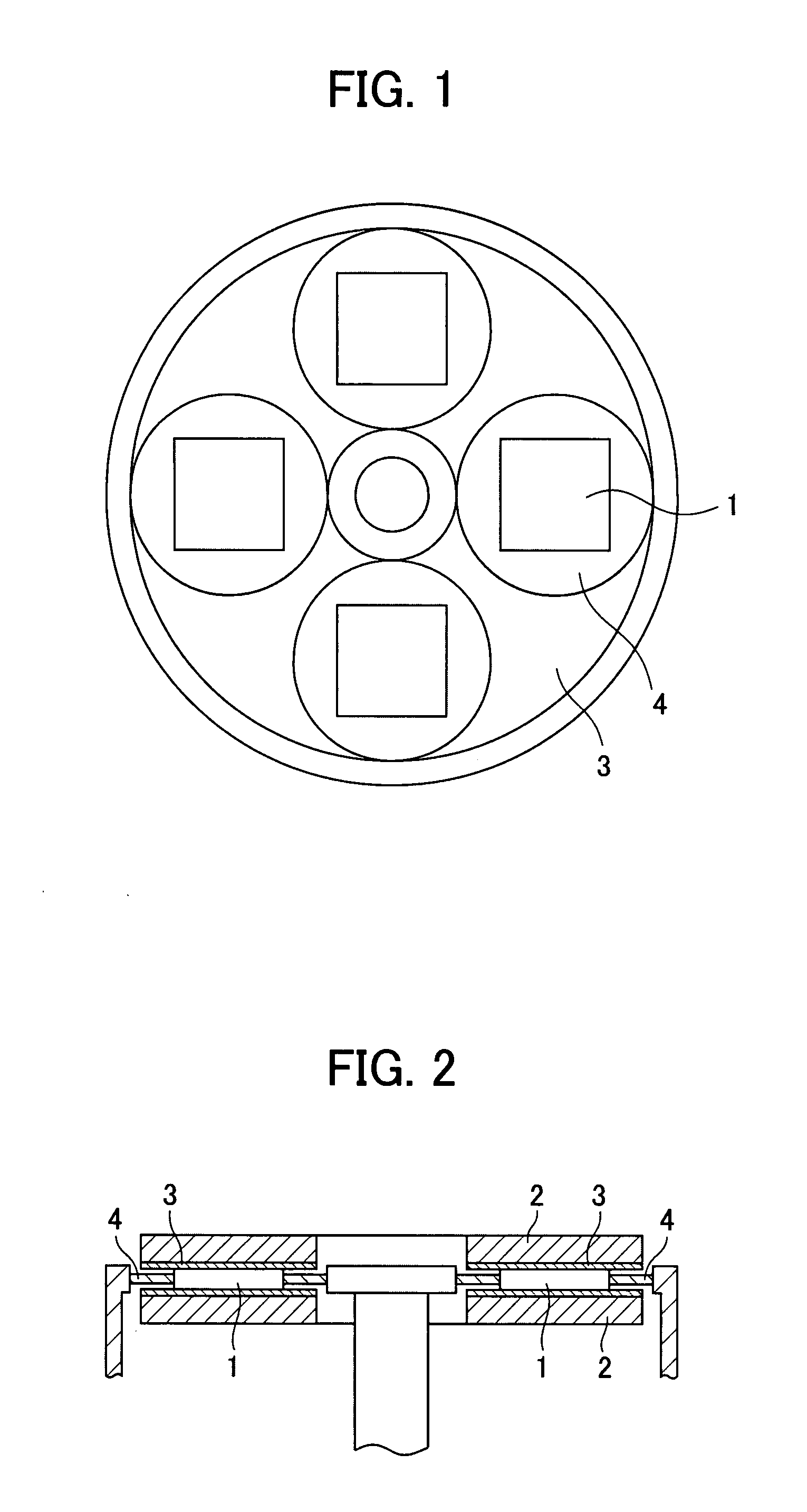Substrate and method of fabricating the same
a substrate and substrate technology, applied in the direction of manufacturing tools, lapping machines, instruments, etc., can solve the problems of large number of components measured in wavelength bands on the level of a few millimeters, inability to obtain the required high-accuracy surface profile, and difficulty in obtaining substrates with high-accuracy surface profiles
- Summary
- Abstract
- Description
- Claims
- Application Information
AI Technical Summary
Benefits of technology
Problems solved by technology
Method used
Image
Examples
example 1
[0080]A glass (“CLEARCERAM-Z HS” manufactured by Ohara) was used as a substrate and this glass was ground by means of a diamond cutter to have dimensions of 152 mm length and 6.35 mm width. The ground substrate was processed with lapping and rough grinding. The Rms of the substrate at this time was 20,000 nm.
[Step of Correcting Flatness]
[0081]The surface profile of the roughly ground substrate was measured by means of a VeriFire-AT manufactured by Zygo, and the result was entered in a polishing machine (Q22-Y manufactured by QED) together with the data of the polishing rate measured in advance to perform MRF processing by means of the above polishing machine for correcting flatness. The polishing slurry was a D-20 manufactured by QED.
[0082]After completing the step of correcting flatness (MRF processing method), the flatness of the substrate surface was measured and found to be 100 nm, the ten-point average roughness was 6.5 nm and the Rms was 0.82 nm.
[Step of Correcting Surface Une...
examples 2 to 9
[0087]The steps in Examples 2 to 9 were performed similarly to Example 1 except for changing the hardness or bulk density of the polishing pad in the step of correcting surface unevenness and changing the hardness or bulk density of the second polishing pad and the polishing time in the step of finishing surface roughness.
PUM
| Property | Measurement | Unit |
|---|---|---|
| density | aaaaa | aaaaa |
| particle diameter | aaaaa | aaaaa |
| roughness | aaaaa | aaaaa |
Abstract
Description
Claims
Application Information
 Login to View More
Login to View More - R&D
- Intellectual Property
- Life Sciences
- Materials
- Tech Scout
- Unparalleled Data Quality
- Higher Quality Content
- 60% Fewer Hallucinations
Browse by: Latest US Patents, China's latest patents, Technical Efficacy Thesaurus, Application Domain, Technology Topic, Popular Technical Reports.
© 2025 PatSnap. All rights reserved.Legal|Privacy policy|Modern Slavery Act Transparency Statement|Sitemap|About US| Contact US: help@patsnap.com


